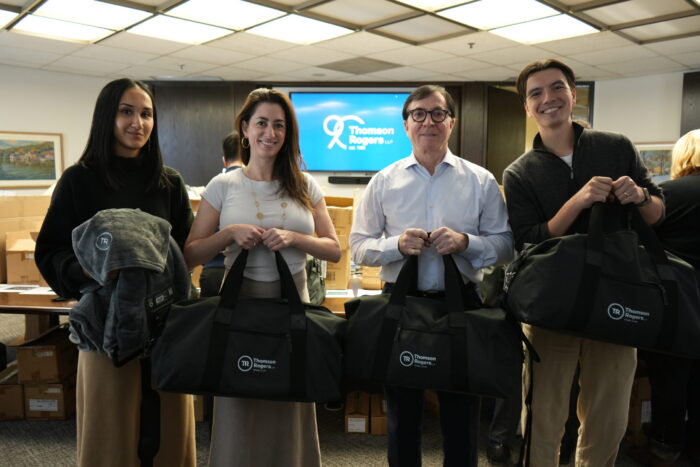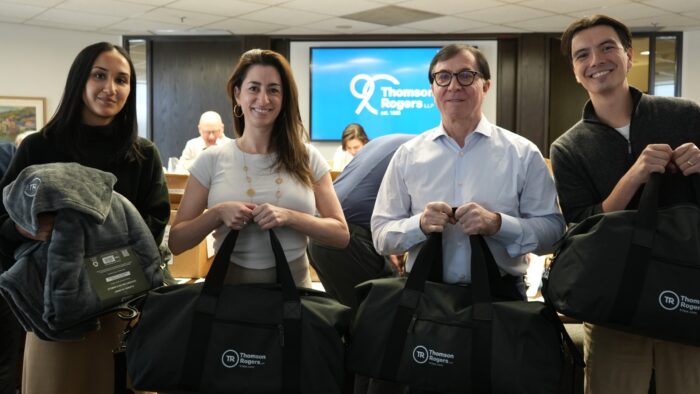Sitting in a car or standing on its hood: Did these injuries occur as a direct result of the use or operation of an automobile?
Author(s): Stacey L. Stevens*
January 2, 2012
Downer v. the Personal Insurance
2011 ONSC 4980 CanLII
On February 26, 2000, a group of unknown men assaulted Michael Downer while he was sitting in his car at a gas station. As a result of the assault, Mr. Downer sustained numerous injuries including depression, anxiety, post-traumatic stress disorder, chronic low back pain, migraine headaches, anxiety and nervousness, and other ailments, including physical limitations on his ability to function. Mr. Downer applied for and received Statutory Accident Benefits from his car insurer, the Personal.
On August 3, 2001, the Personal terminated benefits and advised it would be seeking a repayment based on its opinion that Mr. Downer’s impairments were not directly caused by the use or operation of his motor vehicle. Mr. Downer initiated a law suit against the Personal. In response, the Personal brought a motion for summary judgment to have the claim dismissed.
Mr. Downer’s entitlement to benefits rested on the Court’s interpretation of the word “use” found in section 3(1) of the SABS which requires the insured’s impairments to directly arise out of the use or operation of his automobile. Justice Murray began his analysis with the two-part test for interpreting Canadian automobile insurance statues as set out in Amos v. Insurance Corporation of British Columbia [1995] 3 S.C.R. 405. The test to be applied is as follows:
- Did the accident result from the ordinary and well-known activities to which automobiles are put (the purpose test); and
- Is there some nexus or causal relationship (not necessarily a direct or proximate causal relationship) between the plaintiff’s injures and the ownership, use or operation of his vehicle; or is the connection between the injuries and the ownership, use or operation of the vehicle, merely incidental or fortuitous (the causation test).
The parties agreed the fact that Mr. Downer drove his automobile to the gas station was sufficient to meet the first branch of the Amos test. In order to satisfy the causation test, Mr. Downer had to establish there was a direct connection between his injuries sustained during the assault and the use of his automobile.
There are two key decisions which address the direct connection requirement. In Chisholm v. Liberty Mutual Group OR (3rd) 776 the Court of Appeal considered whether Mr. Chisholm was entitled to Statutory Accident Benefits after being injured by an unknown assailant who fired gunshots at his car. Justice Laskin concluded the requirement that there be direct connection to the use of an automobile was a stringent one and described it as follows:
A direct causation requirement conjures up memories of the famous English tort case of In Re Polemis & Furness, Withy & Co. Ltd., [1921] All E.R. Rep. 40, [1921] 3 K.B. 560, where recovery was allowed for damages that were not a foreseeable result of the defendant’s negligence but were directly caused by it. When one thinks of direct causation one thinks of something knocking over the first in a row of blocks, after which the rest falls down without the assistance of any other act.
In the end, Justice Laskin rejected Mr. Chisholm’s argument that he would not have been shot if he was not driving his car and concluded the dominant feature of his injuries resulted from the gun shots. The use or operation of his car was ancillary at best.
The issue of “use” returned to the Court of Appeal in Greenhlagh v. ING Halifax Insurance Co. [2004] O.J. No. 3485. On January 14, 2002, Ms. Greenhlagh left her car after it became lodged on a rock and started walking back to the main road. She walked for approximately ten hours, before becoming disoriented and falling into an ice cold river. Ms. Greenhlagh suffered severe frostbite and her fingers and legs had to be amputated. Justice Labrosse applied the Amos test and followed the reasoning from Chisholm in concluding a temporal distance existed between the end of the use of the car and her injuries such that the cause of the injury was the exposure to the cold rather than the use of her car.
Justice Murray followed the approach taken in Chisholm and Greenhlagh. However, he concluded the following facts distinguished the Downer case from the previous Court of Appeal decisions:
- Mr. Downer was in his car when the assault occurred.
- One of the causes of Mr. Downer’s psychological injuries was his belief that he ran over one of his assailants as he drove away.
- The assailants were intent on stealing Mr. Downer’s car therefore the assault was a random event.
Accordingly, Justice Murray found there was no temporal distance between the use of his car and his injuries. The motion was dismissed. Mr. Downer was entitled to receive Statutory Accident Benefits.
Olesiuk v. Kingsway Insurance
FSCO A10-002609 (July 2011)
On October 24, 2008, Mr. Olesiuk sustained a brain injury along with multiple orthopaedic injuries while he was repairing his employer’s truck. Mr. Olesiuk’s last memory was standing on the hood of the truck working on the roof of the cab. He was found the next morning lying on the garage floor next to the truck. Although, there was no information as to what happened the hospital presumed Mr. Olesiuk sustained his injuries when he fell off the truck. Mr. Olesiuk applied for Statutory Accident Benefits. Kingsway denied his claim. The dispute was brought before the Financial Services Commission.
As in Downer, Mr. Olesiuk’s entitlement to Statutory Accident Benefits depended on a finding that his injuries were directly caused by the use or operation of an automobile and in particular whether doing repairs to a vehicle could be included in the term “use”.
Kingsway argued that a positive finding in this case would open the floodgates and oblige insurers to pay benefits to everyone from car hobbyists to professional repairmen who are injured while working on a vehicle. In addition, Kingsway argued that a finding that repairing a vehicle is equivalent to using a vehicle files in the face of the Legislature’s intention to restrict coverage and stabilize insurance premiums when it changed the casual requirement found in section 3(1) from “directly or indirectly” to “directly”.
Arbitrator Feldman applied the two part test established in Amos. The key piece of evidence in this case was the fact Mr. Olesiuk was standing on the truck. Arbitrator Feldman acknowledged that vehicles have a number of ordinary well-known uses including transporting people, storing goods, towing trailers and at times to sleep in. Conversely, he found that standing on a vehicle is comparable to using it as a platform which, in his opinion, was not an ordinary well-known use of an automobile. Lastly, Arbitrator Feldman concluded that undertaking repairs is an activity that is done to the vehicle rather than an activity to which the vehicle is put. Based on the foregoing Arbitrator Feldman ruled that Mr. Olesiuk failed to meet the purpose test in Amos and was not entitled to accident benefits as his injuries did not directly arise out of the use or operation of an automobile.
Discussion
The Downer and Olesiuk decisions raise some concerns when it comes to entitlement to Statutory Accident Benefits. Consider a person who stops to repair a blown tire and is injured while installing the spare or someone who is injured while walking to their parked car with some groceries. Where will the line be drawn when the insured’s use or operation of their automobile is what started the chain of events that led to their injuries?
I will continue to follow this issue as the Court and FSCO continue to grapple with the boundaries set by the direct use or operation requirements in section 3(1) of the SABS. In the meantime, please post your comments on my blog which can be found at www.thomsonrogers.com/stacey-stevens-blog.
Stacey L. Stevens, Keeping you up to date
Share this




